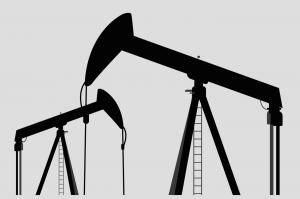Pale Blue Dot: University must protect community from oil industry
In my two years at USC, I’ve always known that oil was an essential part of Los Angeles’ history and economy. The countless buildings named after oil tycoons Edward Doheny and J. Paul Getty serve as constant reminders that before the city was dominated by the entertainment industry, it was an oil town.
But I had no idea how pervasive and dangerous the oil industry remains in today’s Los Angeles. The recognizable oil rigs — the ones that look like huge metal birds dipping their head toward the ground and back up — only represent a small percentage of oil extraction sites in the city.
There over 1,071 active oil wells in the city of Los Angeles, 759 of which are within 1,500 feet of residential areas. Due to a history of discriminatory zoning, the majority of these dangerous neighborhood wells are functioning in South L.A., in close proximity to USC. But even though these low-profile processing sites are not as visually striking as their old-fashioned counterparts, they continue to impose themselves in the lives of Angelenos.
Oil extraction sites are extremely dangerous to the people who live near them, leaking gases and pollutants into homes, schools, hospitals and public spaces. Living near a development site can increase cancer risk and lead to conditions such as headaches, nausea and upper respiratory illness. There is also a constant risk of deadly accidents due to the use of harmful acids, toxic gases and explosive materials at these facilities. Noise pollution from gas compressors, drills and other heavy equipment can cause sleep issues and raise blood pressure, while long-term exposure to noise pollution can contribute to endocrine issues, diabetes and learning disabilities in children.
Now that much of the easily accessible oil has been drawn out of the area, companies are turning to experimental, generally unregulated methods like acid stimulation and hydraulic fracturing, or “fracking.” These methods involve shooting a slurry of water and corrosive chemicals into the earth in order to drill into hard-to-reach areas, and can trigger frequent, violent earthquakes. They are so new that their health effects have yet to be formally studied, but anecdotal evidence indicates that residents living near fracked wells can develop chronic cases of coughing and wheezing, and that pregnant women living near fracked wells are more than 30 percent more likely to give birth to a premature or high-risk baby. As oil extraction methods become more extreme and secretive, the surrounding neighborhoods — mostly low-income communities of color — become more at-risk.
Many wells are hidden behind high retaining walls or inside windowless buildings that do not disrupt the look of the city, and as such can be difficult to spot. I was shocked to discover that there are 29 active wells clustered on the corner of Jefferson Boulevard and Budlong Avenue, less than half a mile from campus and just feet away from neighboring homes. There is another oil field just north of Mount St. Mary’s College that was shut down by the Environmental Protection Agency in 2013 after hundreds of people, including an EPA administrator, were sickened by its fumes. Its parent company, AllenCo, is currently trying to reopen the operation.
Currently, Los Angeles does not have any specific agency to oversee the oil industry or protect the 580,000 Angelenos who live within a quarter mile of an active oil well. Call me a cynic, but I cannot help but wonder how the response would differ if residents from a higher-income area were afflicted by the same issues.
The University has repeatedly stated its intention to serve the surrounding community. It should use its influence in local politics to advocate for increased regulation of the oil industry in the city. After a century of environmental damage, it is now time to prioritize the health of citizens and get oil operations out of South L.A. This can be done by updating zoning laws — which have remained mostly untouched since the 1960s — requiring transparency from the industry and shutting down volatile drilling sites. Local authorities must also discourage companies from using experimental and extreme tactics such as fracking and acid stimulation through legal action. The voices of community groups like STAND L.A., which has been fighting neighborhood drilling in South L.A. since 2013, should be elevated. Emergency response plans for spills and explosions must be published, and the school should be more communicative about the oil wells near campus and the risks they pose. Oil drilling in Los Angeles is not a thing of the past, and we must take action to ensure that it is not a threat to our future.
Kylie Harrington is a junior majoring in journalism. She is the editorial director of the Daily Trojan. Her column,“Pale Blue Dot,” typically runs on Wednesdays.

